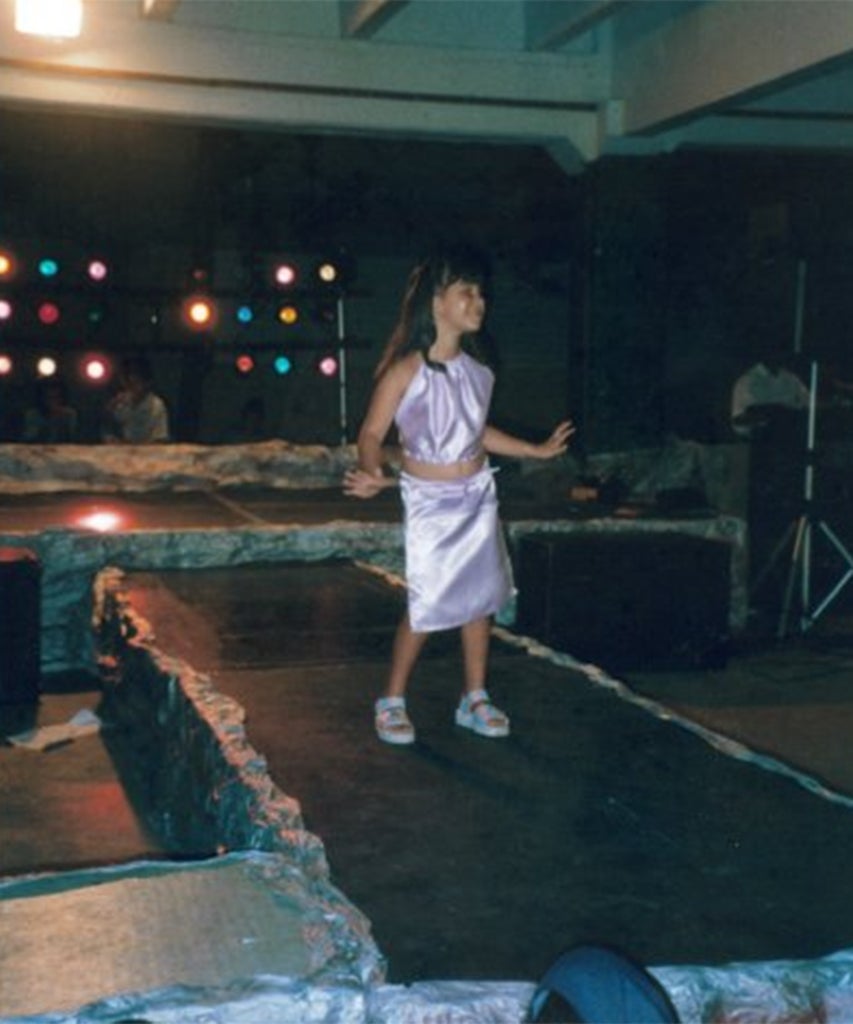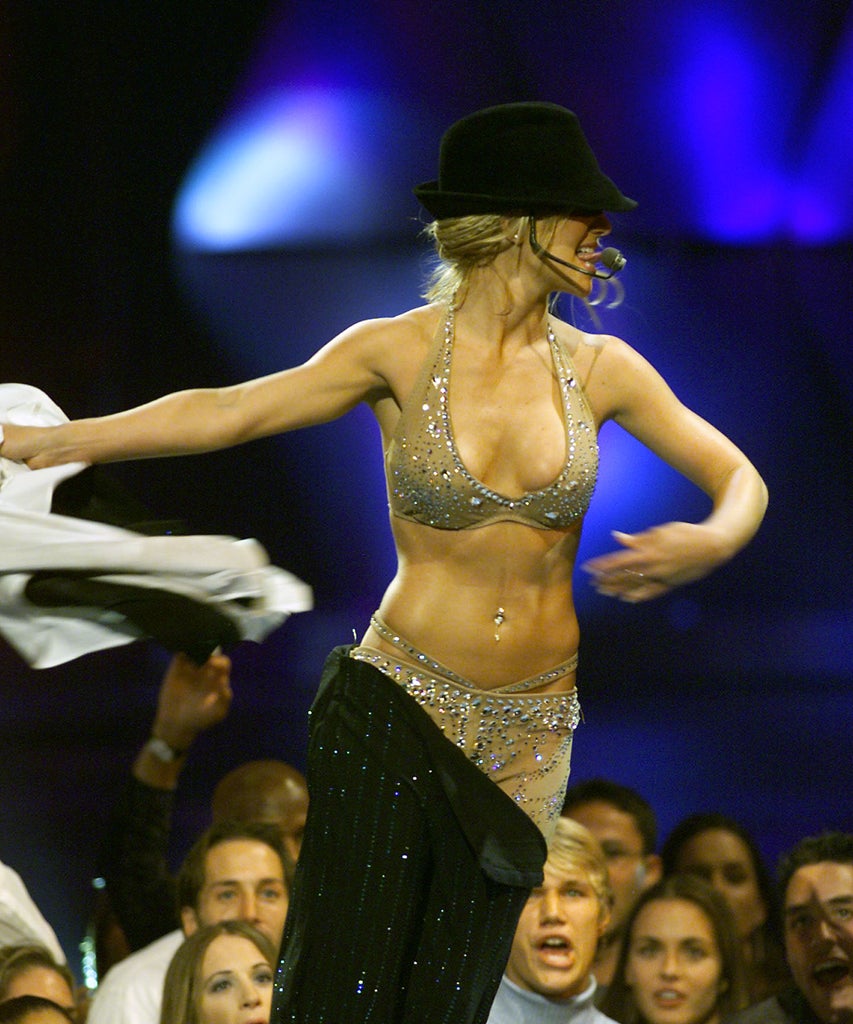In the wake of the Framing Britney Spears documentary and with the #FreeBritney movement gathering momentum, the world is revisiting the various dehumanizing ways that we’ve pushed famous, young women to the brink. In Britney Spears’ case, it’s become apparent that the media harassment contributed to Spears’ mental health struggles, which made it easier to entrap Spears in a 13-year-long conservatorship, the harrowing details of which are only starting to come out.
Part of this reckoning means understanding that Spears’ persona of confidence and sexual self-possession — things that are now understood to be positive attributes — made her a target of misogyny and abuse when she rose to fame in the early 2000s as a sheltered teenager from Mississippi. Her fierce stage persona through sexy costumes and sensual dance moves was controversial from the get-go, in which the combination of sex and innocence — pigtail puffs and bare midriffs — was read as some newly manipulative sin, instead of an age-old dichotomy women have been forced into since the beginning of time. But to a generation of young women, Spears’ style was simply inspirational.
I was one of them. I first heard of Spears in 1999 when she released her first album …Baby One More Time. I was five years old, and quickly learned the lyrics top to bottom while playing with a Barbie version of Spears. But it wasn’t until 2000, when Spears released her sophomore album Oops!… I Did It Again that my obsession was cemented. As a Puerto Rican kid who only spoke Spanish, I didn’t fully understand Spears’ lyrics, even if I knew them by heart. But I intrinsically understood the allure of her style and stage presence. In Spears’ words, she wasn’t good; she was great.

In 1999, when I was five, my school’s summer camp put on a talent show, and I was set on performing a Britney Spears lip-synch. My mother and I worked on the outfit — a purple halter crop top with a matching skirt — taking inspiration from Spears’ Baby One More Time Tour costumes, which were completely different from the usual styles — think: floral dresses and matching headbands — I wore as a kid. I finished off the look with a pair of Power Puff Girls sandals from the local Payless Shoe Store and two pigtails on my hair. I thought my look was an innocent play on Spears’, but not everyone saw it that way.
I was one of a number of girls wearing an outfit deemed inappropriate by my Baptist school’s standards that night. It seemed all of us, consciously or not, wanted to channel Spears in crop tops and mini skirts. And just like her, we were mocked and celebrated in equal parts for imitating the pop star brand of girl power. Backstage at the talent show, my confidence dropped to the floor when a couple of girls pointed out that our outfits were inappropriate for the school. The camp’s leaders — many of them high schoolers — also raised concerns about the crop tops, warning us that we may not be able to perform that night. At that moment, I felt a fraction of the scrutiny that Spears had experienced since she was a teenager.
Even when I was singled out backstage before my routine, I hoped to prove my naysayers wrong through the power of my performance and outfit. And when I did finally perform, my rendition of “Oops!… I Did It Again” earned a standing ovation from the audience. But over the years, I’ve questioned whether I loved the experience and the outfit I wore onstage because it made me feel powerful or because I was taught that I had to look sexy to feel good, even as a five-year-old.
Since watching the Framing Britney Spears documentary, I’ve understood that young women enter a cycle of sexualization that works hard to build up our ideals of beauty, sensuality, and confidence. Learning that the female figure who helped me build my ideal of sexiness and empowerment never had the power is a gut punch to my belief system. If Spears, a successful, era-defining pop star, always portrayed a version of sexiness created for a man’s world, then so did I.
And if that was the case, was my triumphant moment on stage — and its accompanying crop top — ever really my own?
Throughout my life, I’ve watched pop stars like Britney Spears, Christina Aguilera, and Beyoncé use style to celebrate their bodies as they are, providing a blueprint for what 21st century womanhood can be. But also what it tries to fight against. Spears’ life provides a prime example of how women pull themselves apart trying to meet society’s standards without realizing we’ll never actually earn the approval we’re seeking, with or without the crop tops.
In a 1999 “Green Room Tales” interview, Spears pointed out the double standard in the music industry, noting that she was maligned for filming a music video in a crop top while her male peers’ actions were never questioned. “I love Backstreet Boys and N’Sync,” she said, “but when they’re doing all those thrusts on stage and when they are making out with the microphone, no one says anything about that.”

By the 2000s MTV Video Music Awards, Spears was beginning to use style to give an intentional middle finger to critics. She wore a conservative black pinstripe suit with a matching hat to sing “Satisfaction,” a re-work of the famed hit by The Rolling Stones. But a few seconds after coming onstage, she stripped off the suit to reveal a nude crystal-encrusted top-and-bottom combo while singing: “And that girl comes on and tells me / how tight my skirts should be / she can’t tell me who to be.”
After that performance, Spears never looked back. A year later, she performed “I’m A Slave 4 U” on the same stage wearing a green cut-out crop top and booty shorts, paired with the wildest of accessories: a live boa. Later, after being publicly shamed for her breakup with Justin Timberlake, she joined Madonna and Christina Aguilera in one of the most famous kisses of all time, donning a white wedding-like dress to perform “Like A Virgin” and “Hollywood” at the 2003 MTV VMAs.
What looked like freedom and personal choice at the time was front and center in Spears’ performances during that era. But as we’ve been constantly reminded throughout her conservatorship battle, Spears had little freedom to make her own choices. In 1999, she was sexualized on the cover of Rolling Stone as a teenager, when David LaChapelle shot a photo of her in a pajama set. Spears later said LaChapelle “totally tricked [her].” Today, she’s unable to make decisions over her career, clothes, or even her reproductive future.
As an avid Spears fan, looking back at her ‘90s and early ‘00s style moments, I’m reminded that in a society ruled by the male gaze, we’re all constantly consuming messaging that chips away at our agency, whether we’re bound in a conservatorship or not.
Neither Spears nor any other pop star is at fault here. They too grew up in a society that turned them into sex symbols from the time they hit their teens. It pains me to think that, while we may love crop tops, leather pants, or schoolgirl outfits, they’ll never be a true form of empowerment unless we are able to exist and get dressed outside of the exhausting structure that is patriarchy. Only then will our agency be truly ours.
Like what you see? How about some more R29 goodness, right here?
Will Britney Ever Get Her Conservator Money Back?

